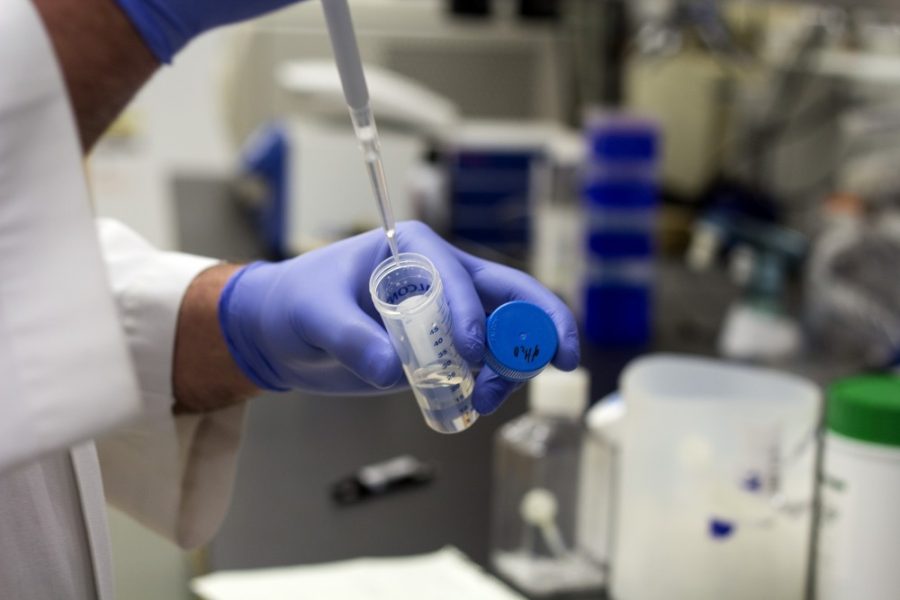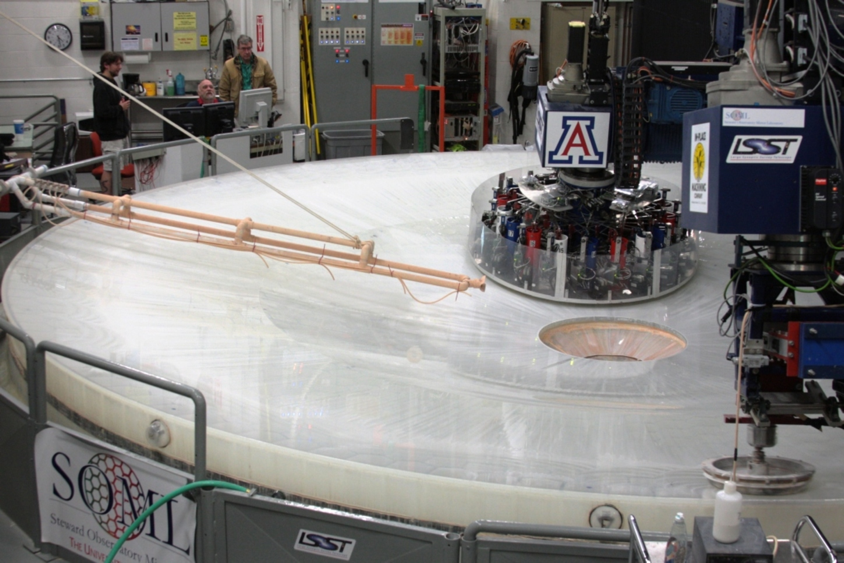Researchers at the University of Arizona are engaged in developing a novel drug to treat a sub-type of breast cancer, triple negative.
To address this type of breast cancer, the drug targets protein trafficking and movement within the cell of the epidermal growth factor receptor. According to UA scientists’ findings, the drug they are developing “blocks cellular migration and survival in an EGFR- and tumor-specific manner.”
These researchers observed that the drug caused reductions and regressions in tumor growth, had little to no effect on healthy cells in the body and showed no toxic side effects on the mouse models they utilized.
The American Cancer Society says that cancer, a complex and deadly disease, is the second most cause of death in the United States. Considering triple-negative breast cancer, the ACS says that it is aggressive and more likely to spread throughout the body. Compared to other types of breast cancer, it is more likely to come back after treatment.
Triple-negative breast cancer gets its name because it lacks the two hormone receptors commonly expressed in a breast: the estrogen receptor and progesterone receptor, as well as HER2. Even though it expresses a lot of EGFR, it has not responded to previous therapies, according to professor and head of the department of molecular and cellular biology, Joyce Schroeder.
In a scientific journal featured in Frontiers in Oncology, they say that EGFR “is one of the most frequently altered oncogenes in solid cancers.” Many have studied this oncogene for years to try and develop cancer therapies to treat it.
“So, for a long time, people have tried and tried to understand what will [triple negative breast cancer] respond to, or can we develop a new therapy that causes these tumors to respond,” Schroeder said.
This new drug that the UA is developing blocks EGFR’s ability to go to the nucleus and alter what the cell does there, which is a major component of why EGFR is driving tumors, according to postdoctoral researcher in the department of molecular and cellular biology Benjamin Atwell.
What this targeted therapy does is make the drug specific to cancer cells, but non-toxic to healthy cells, according to Atwell. UA researchers used this treatment to target something unique to triple-negative breast cancer and does not occur in noncancerous cells.
EGFR’s ability to go to a certain part of the cell is affecting gene transcription, and making proteins that aren’t supposed to be made, according to UA professor of chemistry and biochemistry William Montfort.
Tumors are also a part of triple-negative breast cancer, and this new drug tries to treat this. A tumor is an abnormal part of the body, and because of this the immune system tries to get rid of it.
“Triple-negative breast cancer evades the immune system pretty well. But what we found is that [when] we’re treating these animals with our peptide, we are to some degree activating the immune system to recognize the tumor as a tumor, not normal,” Atwell said. “So that is currently our leading hypothesis for why we are getting a stronger effect in mice than we ever saw in cell culture.”
The effect this drug has had on tumors is that they become either stagnant — not growing — or they reduce, and eventually reduce so much that you can’t measure it with calipers, according to Atwell.
“When you give [the drug] to a mouse tumor model, it kills the tumor,” Montfort said. “The primary tumor goes away.”
The basics of science are trial and error; experimentation doesn’t always lead to the solution. Even when faced with setbacks, scientists persevere. Throughout the years, research on triple-negative breast cancer and EGFR has led to treatments that haven’t always worked.
The first treatment they tried blocked the activity they were hoping for but was ultimately unstable. After that, the second treatment they tried was too stable. It was attacking noncancerous cells, inhibiting their normal functions, which led to toxic side effects, according to Schroeder.
Similarly, other drugs that target EGFR work in different ways, such as tyrosine kinase inhibitors or monoclonal antibodies. The inhibitors stop the normal signaling of EGFR and gain tumor specificity by targeting mutations of EGFR. On the other hand, the antibodies are not very permeable, so they require that EGFR is still on the membrane. These solutions don’t work for nuclear EGFR, according to Atwell.
“This third [new drug] is basically the result of everything that we learned from those first 15 years of work to try and understand how the protein was working in cancer that’s unique and not happening in normal cells, how to make the drug more stable and really, really target all the bad aspects of cancer that we want to target,” Atwell said.
Just like any form of treatment, the future of this drug involves further testing and development.
The following steps for this drug include a toxicity screening to validate that it’s not impacting the animals’ health, seeing how well it compares with the standard care (chemotherapy) and then human trials, according to Schroeder.
“We’re super excited about all the results we’re getting about this drug, everything looks so great. [We] have a lot of hope that it’s gonna make a difference. But of course, [there are] a lot of hurdles still,” Schroeder said.
Follow the Daily Wildcat on Twitter









